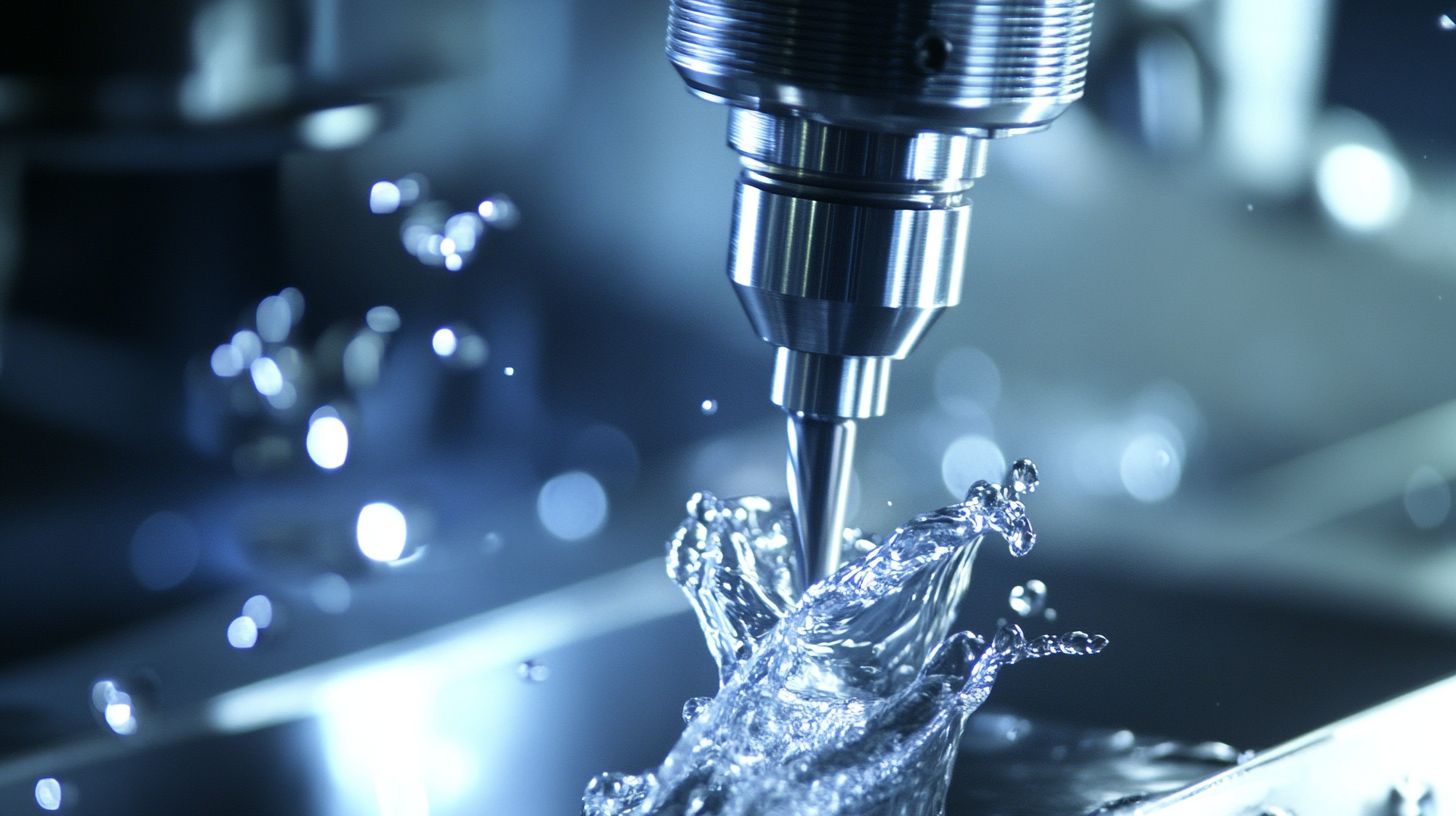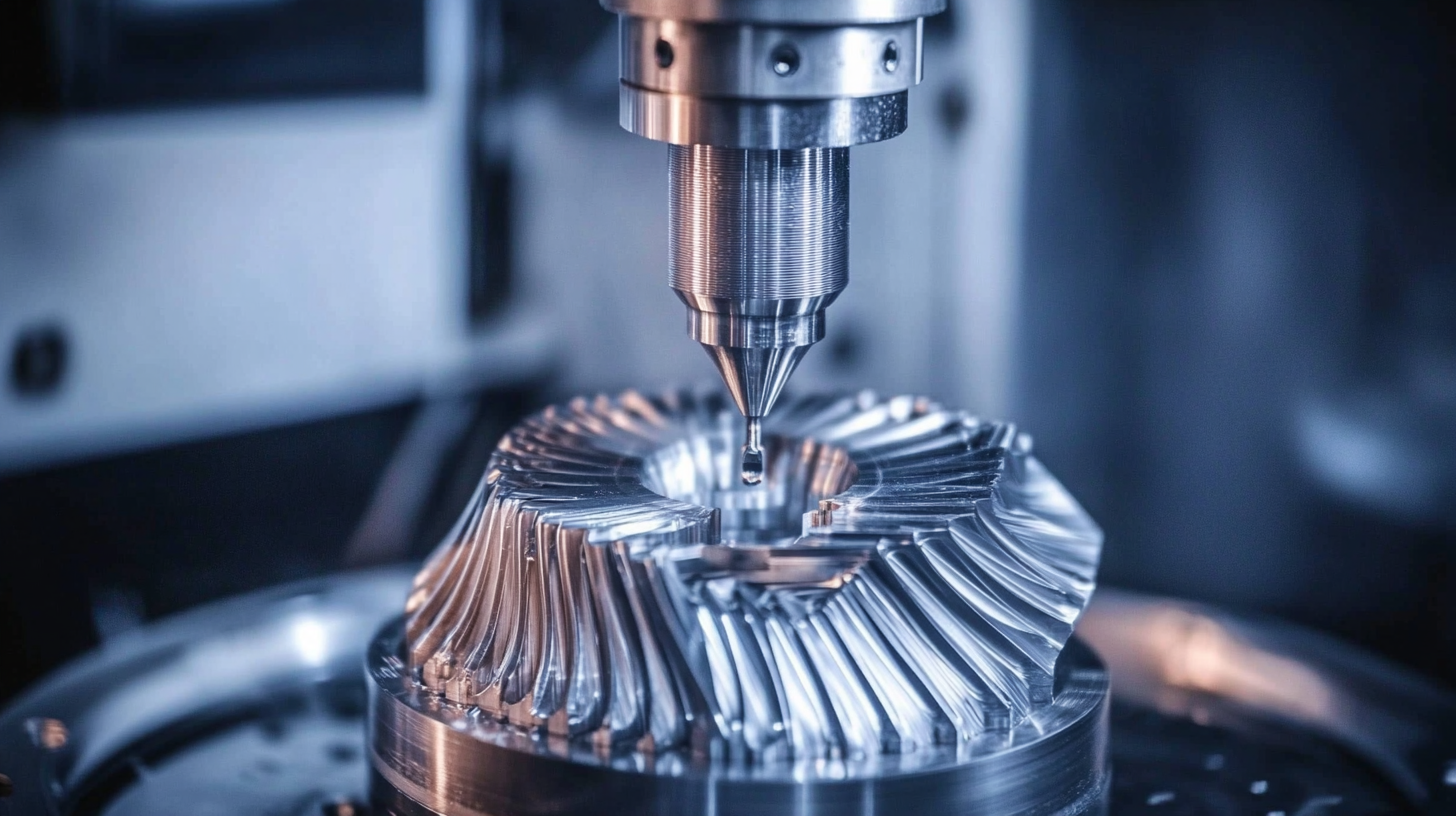Challenges Related to Best High Precision Cnc Machining Process Efficiency
In the rapidly evolving landscape of manufacturing, High Precision CNC Machining stands at the forefront of technological advancement, offering unparalleled accuracy and efficiency for various industries. According to a recent report by MarketsandMarkets, the CNC machining market is projected to grow from $70 billion in 2021 to $100 billion by 2026, reflecting a compound annual growth rate (CAGR) of 7.5%. However, as businesses strive for optimal efficiency, several challenges emerge that can hinder the effectiveness of high precision processes.

Factors such as machine calibration, tool wear, and operator skill play critical roles in maintaining process integrity. This blog will delve into the intricacies of selecting quality manufacturers who excel in High Precision CNC Machining, along with a comparative analysis of leading industry players to highlight the best practices for overcoming common challenges and enhancing overall production efficiency.
Exploring Alternatives to Enhance CNC Machining Process Efficiency
In the pursuit of high precision in CNC machining, efficiency often takes a backseat, presenting various challenges that manufacturers must navigate. To enhance CNC machining process efficiency, one potential alternative is the adoption of advanced software solutions. Implementing Industry 4.0 technologies like IoT (Internet of Things) and AI (Artificial Intelligence) allows for real-time monitoring and adjustment of machining parameters. By using predictive analytics, manufacturers can foresee potential issues and adjust processes proactively, reducing downtime and waste.
Another promising avenue is the integration of high-performance tooling materials and design. By utilizing materials that are more durable and capable of maintaining sharpness longer, manufacturers can increase the lifespan of tools, thereby reducing the frequency of tool changes and boosting overall productivity. Additionally, optimizing tool paths through advanced CAD/CAM software can lead to more efficient machining processes, minimizing the time taken for each operation. Embracing these technological advancements not only promotes efficiency but also enhances precision, ensuring that the final products meet the highest quality standards.
Challenges Related to CNC Machining Process Efficiency
This chart displays the efficiency levels of different CNC machining processes based on precision and challenges faced in each category.
Evaluating the Impact of Material Selection on Precision Machining Outcomes
The selection of materials plays a crucial role in the efficiency of high precision CNC machining processes. Each material possesses unique properties that can significantly influence machining outcomes, including precision, surface finish, and tool wear. For instance, harder materials like titanium require specialized cutting tools and techniques to achieve desired tolerances, which can increase machining time and costs. Conversely, softer materials such as aluminum can be machined more efficiently, but they may not yield the same level of durability required for certain applications.
Moreover, the compatibility between the chosen material and the machining process must be carefully evaluated. Factors such as thermal conductivity, tensile strength, and machinability ratings can greatly affect the operational parameters of CNC machines. Selecting the right material can minimize defects and improve overall productivity. If materials are not chosen strategically, manufacturers may face challenges such as increased cycle times and reduced part accuracy, ultimately impacting the end product's quality. In this highly competitive landscape, understanding the nuances of material selection is vital for optimizing precision machining outcomes.

Innovative Techniques for Reducing Cycle Time in CNC Operations
As the global CNC machine market is projected to expand from
$101.22 billion in 2025 to
$195.59 billion by 2032, with a compound annual growth rate of
9.9%, the need for enhanced efficiency in CNC operations has never been more critical.
One of the primary challenges faced by manufacturers is the reduction of cycle time without compromising precision.
Innovative techniques are essential in addressing this issue, enabling companies to stay competitive in a rapidly evolving market.
One effective approach to minimizing cycle time involves the integration of advanced automation technologies.
By employing robotics and intelligent software systems, manufacturers can streamline operations, reduce
manual intervention, and consequently shorten production cycles. Moreover, optimizing tool paths using sophisticated
algorithms can enhance machining efficiency, ensuring that each operation is executed with minimal downtime.
These strategies not only boost productivity but also contribute to the overall quality of the final product,
making them indispensable in modern CNC machining processes.
Balancing Cost and Quality: Alternative Approaches in CNC Machining
In the landscape of CNC machining, balancing cost and quality has become a pivotal challenge for manufacturers striving for efficiency. According to a report by Grand View Research, the global CNC machining market is projected to reach USD 100 billion by 2025, underscoring a growing demand for precision without compromising on budget. Companies are increasingly exploring alternative approaches to optimize both aspects. One method gaining traction is the adoption of advanced materials and technologies such as additive manufacturing, which can significantly reduce waste and improve production speed.
Moreover, the integration of automation and artificial intelligence in CNC machining processes enables a more seamless quality control mechanism. As noted by McKinsey, companies that implement automation can see productivity improvements of up to 30%. By utilizing real-time monitoring and predictive maintenance, businesses not only enhance their operational efficiency but also ensure that product quality meets stringent industry standards. This dual focus on cost efficiency and high precision positions these companies to remain competitive in a rapidly evolving market, where customer expectations are continually on the rise.

Adopting Advanced Technology Solutions for Improved CNC Efficiency
The rapid growth of the CNC machine market, projected to reach $195.59 billion by 2032, highlights the increasing importance of precision engineering in manufacturing. To maintain competitiveness in this expanding market, industries are urged to embrace advanced technology solutions that enhance CNC process efficiency. These solutions not only streamline operations but also improve precision and minimize waste, vital for high-quality production.
Tips for enhancing CNC efficiency include investing in modern software that integrates real-time data analytics to monitor machine performance and predict maintenance needs. Another effective approach is implementing automated solutions that reduce manual intervention, thereby accelerating production rates without compromising quality. Lastly, training operators on the latest CNC technologies and best practices can significantly increase operational efficiency, ensuring that the workforce is adept at leveraging new tools and techniques.
By prioritizing these advancements, manufacturers can optimize their CNC machining processes, ultimately contributing to the growth of the precision engineering sector and meeting the rising demand in the global market.

